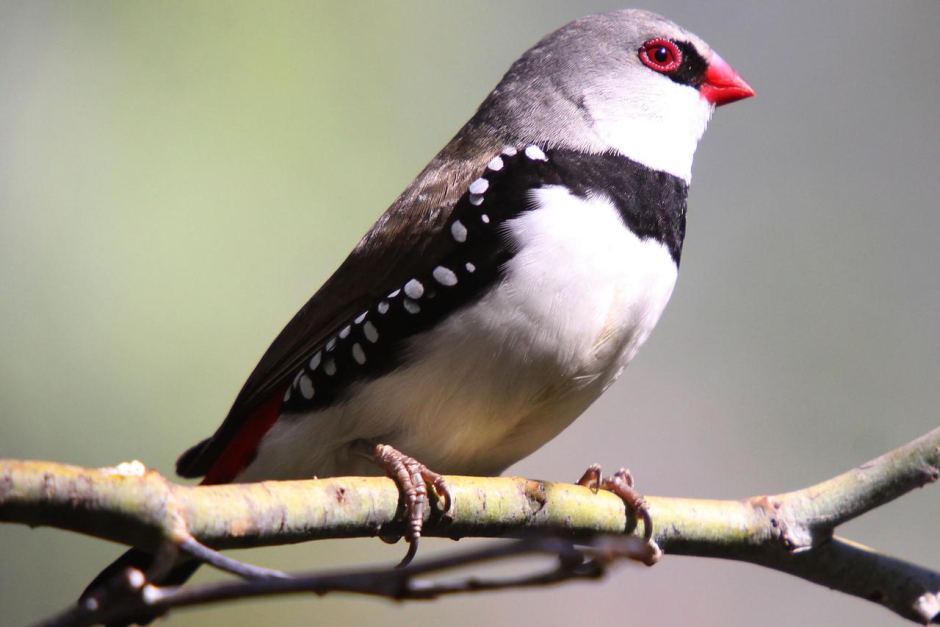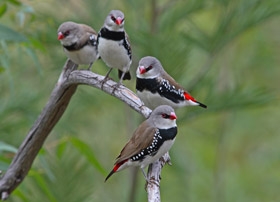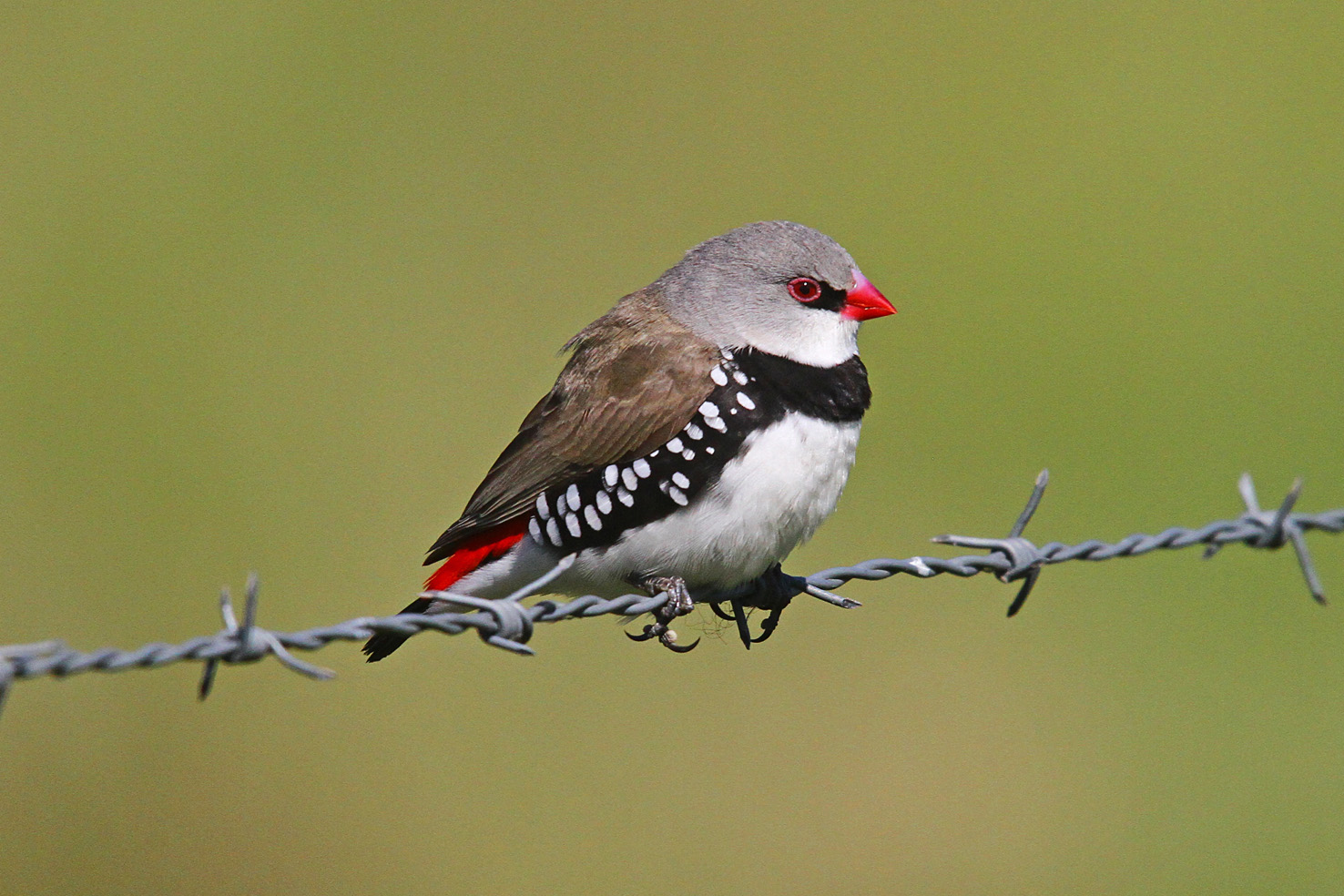
Stagonopleura guttata or Emblema guttata
SUBFAMILY
Poephilinae
TAXONOMY
Loxia guttata Shaw, 1796.
OTHER COMMON NAMES
English: Diamond sparrow, diamond Java sparrow, spottedsided
finch; French: Diamant а gouttelettes; German: Diamantamadine;
Spanish: Pinzуn Cola de Fuego Diamante.
PHYSICAL CHARACTERISTICS
4.7 in (12 cm). The adult male is brown, above and including
wings; rump and upper tail coverts are bright crimson, tail
feathers black; forehead, crown of head, and hind neck ashy
gray; lores black; throat white; sides of foreneck and flanks
black, with some feathers having a subterminal white spot;
breast, abdomen, and undertail-coverts white; bill vinous red;
legs and feet dark gray; iris red. The adult female is very similar
but usually smaller, with a narrower black band on foreneck,
and paler lores.
DISTRIBUTION
East-central and southeastern Australia.
HABITAT
Inhabits savanna woodland, eucalypt forests, acacia scrub,
mallee, orchards, cultivated areas, and parks and gardens.
BEHAVIOR
Found in pairs or small, often mixed-species flocks. The contact
call is a “twooo-heee” while the alarm call is a loud “tay tay tay.”
The song is described as a series of low-pitched rasping and
buzzing notes. Roosts in specially built nests similar to those
used for rearing young, but lacking an entrance tube and lining.
FEEDING ECOLOGY AND DIET
Feeds on the ground where it characteristically hops in search
of a variety of seeds and insects.
REPRODUCTIVE BIOLOGY
The breeding season is from August to January during which
this species builds a grass nest with an entrance tube up to 6 in
(15 cm) long. The nest is lined with fine grasses and feathers
in which four to six white eggs are laid. The nest is sometimes
built under or near those of raptors.
CONSERVATION STATUS
Near Threatened. The decline in numbers is thought to be
due to alterations of the natural habitat.
SIGNIFICANCE TO HUMANS
This species is the only firetail commonly kept in zoos.
Other popular Animals
Photo Gallery of - Diamond firetail




 Animalia Life
Animalia Life